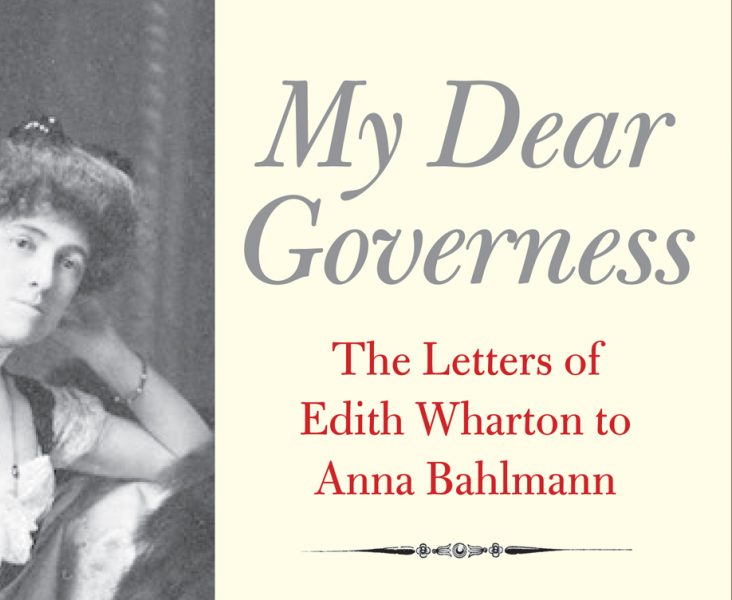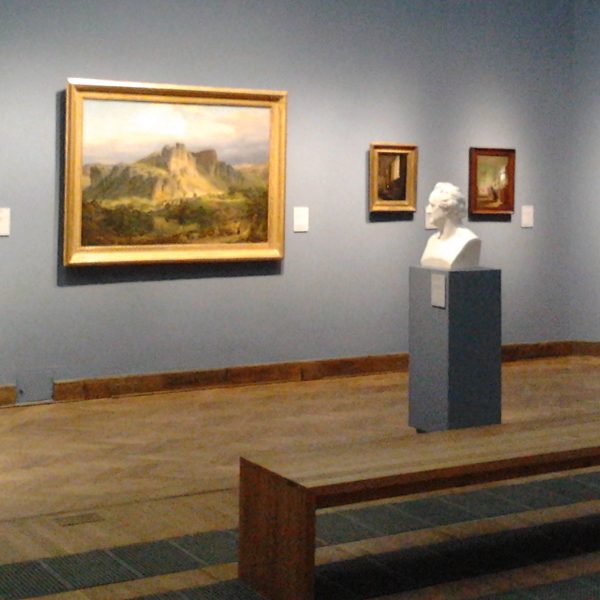Letters of Influence: Edith Wharton and Her Governess
One of the joys and challenges of literary biography is deciding how to interpret the ripples that are made as each new nugget of information drops into that heady mixture of facts and figures, vibrant anecdotes and dynamic interpretations that make up what we call an author’s “life and work.” In 2009 the personal effects of Anna Catherine Bahlmann (1849–1916) made particularly large waves in the “life and work” of American literary legend Edith Wharton, who in 1921 became the first woman to win the Pulitzer Prize for her novel, The Age of Innocence. Bahlmann was Wharton’s governess, German tutor, and as these letters (which span nearly forty-two years) reveal, lifelong mentor. While we have numerous correspondences from Wharton’s adult life, just three letters from the author’s childhood and early adulthood were previous thought to have survived. Thus, the Bahlmann collection promises to provide Wharton enthusiasts and scholars with a fresh glimpse into the author’s formative years.
 In her new book, My Dear Governess: The Letters of Edith Wharton to Anna Bahlmann, Wharton scholar Irene Goldman-Price gives us the first comprehensive presentation of the Bahlmann collection. Woven within her smartly-annotated compilation are several intriguing questions about how this new material might affect the way we read Wharton. One of these is how we should interpret the surprising influence of romanticism on the author’s early development. Edith Wharton, after all, was decidedly not a romantic. Her protagonists seldom find happy endings and Wharton’s scathing critiques of the power plays made by the American aristocratic class she grew up in are matched with unrelenting portrayals of the broader destruction wrought by class and gender oppression. While there is a strong element of satire to many of her critiques, it was the author’s bleak tonality that led her friend Henry James to call her a “dark prophetess.”
In her new book, My Dear Governess: The Letters of Edith Wharton to Anna Bahlmann, Wharton scholar Irene Goldman-Price gives us the first comprehensive presentation of the Bahlmann collection. Woven within her smartly-annotated compilation are several intriguing questions about how this new material might affect the way we read Wharton. One of these is how we should interpret the surprising influence of romanticism on the author’s early development. Edith Wharton, after all, was decidedly not a romantic. Her protagonists seldom find happy endings and Wharton’s scathing critiques of the power plays made by the American aristocratic class she grew up in are matched with unrelenting portrayals of the broader destruction wrought by class and gender oppression. While there is a strong element of satire to many of her critiques, it was the author’s bleak tonality that led her friend Henry James to call her a “dark prophetess.”
There are hints of Wharton’s “anti-romanticism” in the Bahlmann letters, as for example, when she writes to “Dear Tonni”(her affectionate name for Bahlmann, from the German Tante, or aunt) about George Sand’s novel Consuelo: “All the clap-trap and fol-de-rol and mysticism were too much…as if there wasn’t beauty and mystery and charm enough in real life without going over to the supernatural for your great effects. It must be the vulgarist kind of mind which has to resort to blue lights and tinsel and pantomime to produce an impression.”
However, the letters also reveal that Wharton spent much of her childhood reading romantic literature of one type or another. With Bahlmann she read Norse and German mythology, Arthurian legend, and the work of numerous English and German Romantics, a number of whom Wharton expresses great attachment to in her letters, including Goethe, Byron, and Shelly. Indeed, one of the most enriching qualities of the Bahlmann letters for Wharton’s readers is the sheer number of literary references and critiques it contains, something which will provide readers and scholars who approach Wharton’s work from a variety of historical and literary angles with something to explore and comment on.
While Bahlmann appears to have fed Wharton’s literary appetites on several romantic genres, her own life might simultaneously have provided the author with a clearer vision of the social hardships she renders so powerfully in her own work. As Robert Silman suggests in his review of My Dear Governess for the Boston Globe, the letters as they are paired with the Goldman-Price’s extensive and accomplished supplementary materials reveal that “Bahlmann may have been the source of Wharton’s uncanny knowledge of need, financial misery, and longing, perhaps best expressed in House of Mirth.” While Wharton clearly treated Bahlmann like family, the class divide between the two women remained intact and adds to the dynamic of an already compelling relationship as it unfolds through almost half a century of letters.
Even in her youth, Wharton appears to have felt a strong intellectual sympathy with her governess. In a letter from 1878, sixteen-year-old Wharton (then Edith Newbold Jones) wrote to Bahlmann: “There is a sort of friendship which makes itself felt less by personal intercourse, than by those shocks of intellectual sympathy which seem to bridge over silence and space and make two minds one – and it is for that reason that in certain moments I feel as strongly “der verbiden”[united with you] as if you were in the room and talking to me.” Although signs of Wharton’s personal maturation are visible over the course of the correspondence, her letters remain both candid and affectionate, challenging, as Goldman-Price notes, the prevailing perception of Wharton as a cool, dispassionate individual. The author’s warmth toward Bahlmann includes a sensitivity toward her governess’s disadvantaged social and financial circumstances, as when she admonishes herself for forgetting to send “Tons” money for the telegrams she so often begs her to write. Wharton also clearly viewed Bahlmann as someone who shared her dark sense of humor. While she never wrote to her governess about the bleaker events in her life – family tension, her husband’s mental illness, her failed love affair with journalist Morton Fullerton – Wharton does reveal a certain mixture of anxiety and revelry in the darker side of her disposition: “I really sympathize with that wicked, wriggling serpent who insinuated himself into Eden.”
As a whole, Wharton’s descriptions of herself and her life experiences in these letters, as in her autobiography A Backward Glance, often invoke a light, whimsical tone – a fairytale quality absent from her own fiction. Yet her intimacy with Bahlmann allows an authenticity to bleed through here as it doesn’t in the autobiography. Whether these letters as Goldman-Price has presented them provide a more “accurate” portrait of Wharton is certainly contestable, but their value as a resource is not. The editor has provided the foundations for a refreshing new look at one of the biggest names in American literary fiction.




